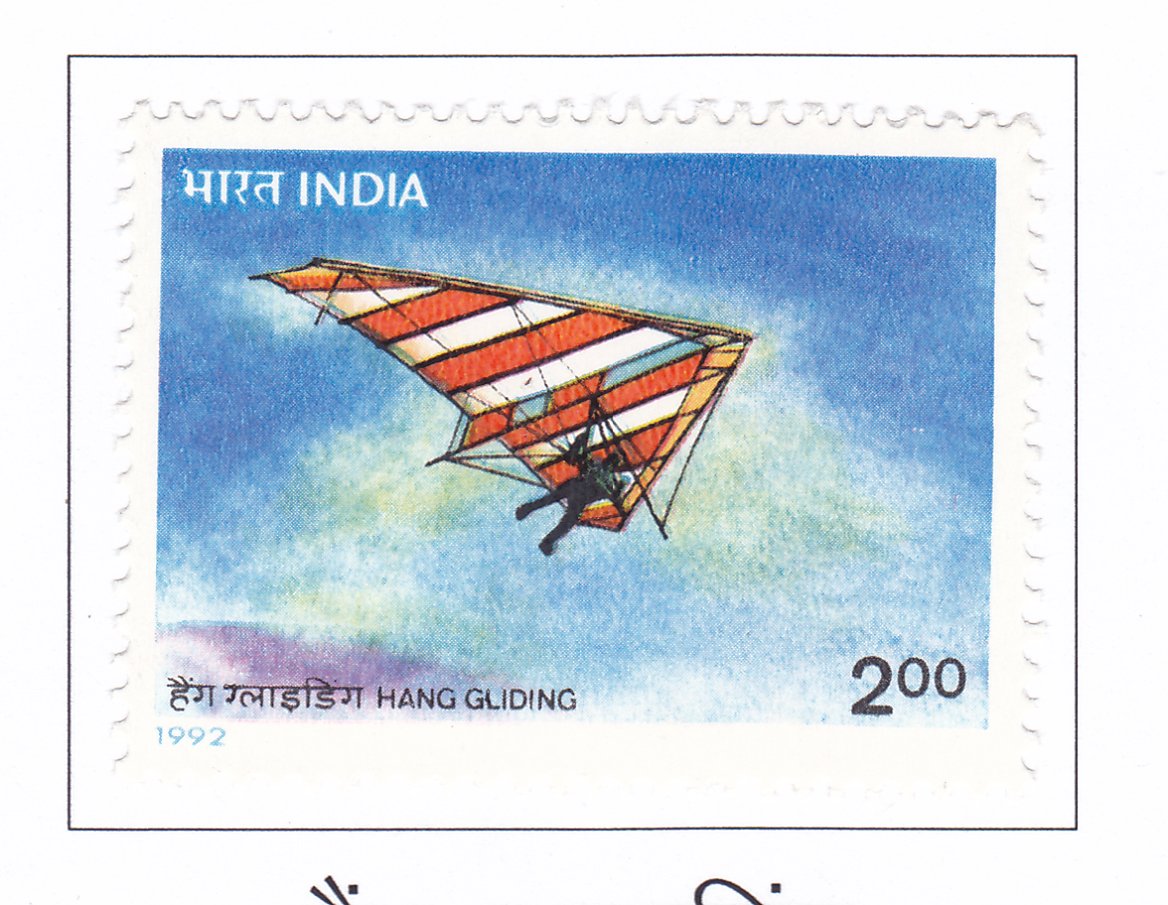Adventure Sports: Hang-gliding

Technical Data
| Stamp Set | Adventure Sports |
|---|---|
| Date of Issue | April 29, 1992 |
| Denomination | Rs. 2 |
| Quantity | 600,000 |
| Perforation | comb 13½ x 13 |
| Printer | Security Printing Press, Nashik |
| Watermark | No Watermark |
| Colors | Multicolor |
| Catalog Codes |
Michel IN 1349 Stamp Number IN 1406 Yvert et Tellier IN 1147 Yvert et Tellier IN 1499 |
| Themes | Aviation | Hanggliding | Sports |
Adventure Sports: Embracing the Thrill
Table of Contents
Overview
Adventure sports, characterized by elements of thrill and competition, have gained immense popularity worldwide in recent years. These activities test the limits of human endurance and skill, offering a unique blend of excitement and challenge. Among the various adventure sports, four established ones have been highlighted for their prominence and appeal.
Hang Gliding
Origins: Coined by Otto Lilienthal, the father of modern Hang Gliding, the term ‘Hange Gleiter’ refers to the sport.
Structure: A typical hang glider features a light aluminum frame covered with synthetic fabric. The pilot is suspended by a harness or swing seat connected to the control frame.
Competitions: Organized competitions evaluate duration of flight, distance, and altitude gained.
Introduction in India: The sport was introduced in India in 1984, with the first competition held in Billing, Kangra Valley, Himachal Pradesh. Billing remains India’s most famous gliding spot, hosting competitions of international standards.
Hang gliding is an air sport in which a pilot flies a light, non-motorized, foot-launched heavier-than-air aircraft called a hang glider. The design of these gliders allows them to soar and glide using air currents. Here are some key points about hang gliding:
History
Early Development: The concept of hang gliding dates back to the 19th century with pioneers like Otto Lilienthal, who made significant contributions to the development of gliders.
Modern Hang Gliding: The modern sport began in the 1960s and 1970s, particularly with the development of flexible-wing hang gliders by pioneers such as Francis Rogallo and John Dickenson.
Equipment
Hang Glider: A hang glider typically consists of an aluminum or composite frame covered with a fabric wing. The pilot is suspended from the wing by a harness and controls the glider by shifting their body weight.
Harness: Pilots wear a harness that attaches to the hang glider, allowing them to hang beneath the wing.
Helmet: For safety, pilots wear helmets to protect their heads during takeoff, flight, and landing.
Instruments: Pilots often use variometers to measure the rate of climb or descent and altimeters to track altitude.
Techniques
Launching: Hang gliders are typically launched from hills or mountains where pilots can run downhill to gain airspeed. They can also be launched by towing, either behind a vehicle or a boat.
Flying: Pilots control the glider by shifting their weight to change the center of gravity, allowing them to turn, climb, and descend.
Landing: Landing is usually done on flat ground, with pilots carefully timing their descent to land smoothly.
Safety
Training: Proper training is essential for safe hang gliding. Pilots typically learn through certified schools and instructors.
Weather Conditions: Pilots need to be aware of weather conditions, as factors like wind, thermals, and turbulence can significantly impact flight safety.
Popularity
Hang gliding is popular worldwide, with many enthusiasts drawn to the freedom of flight and the challenge of mastering the sport. Competitions and recreational flying are common, with pilots often traveling to locations with ideal flying conditions.
Design Description
The set of stamps and the First Day Cover have been designed by R.N. Pasricha, with the cancellation designed by Alka Sharma.
This brief insight into adventure sports, particularly hang gliding, showcases the sport’s thrill and the structured nature of its competitions, highlighting its growing appeal and organized events globally and in India.
